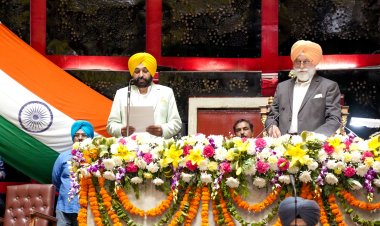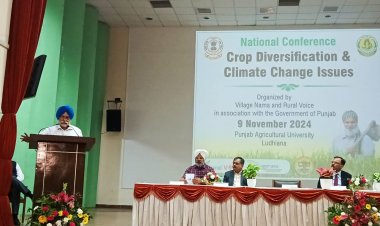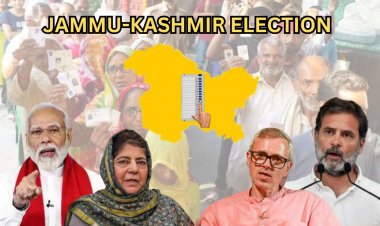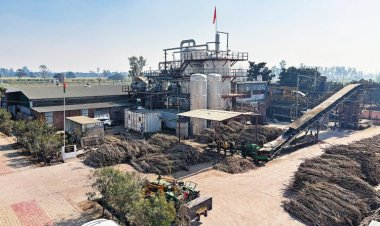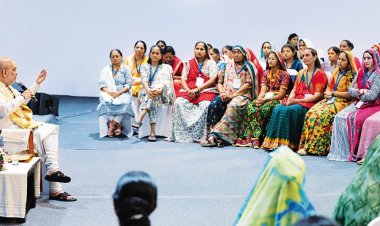Did the farmers’ movement indeed have no impact on Assembly election results?
The results of the five state Assembly elections have led people to say that the elections remained unaffected by the farmers’ movement, which went on for more than 13 months on the borders of Delhi. If we take a look at the UP results, this seems to be true at first sight because the BJP has returned to power in the state with a majority. But a closer look at the results in general, and those in the movement districts in particular, reveals that one cannot categorically say that the farmers’ movement had no impact indeed.
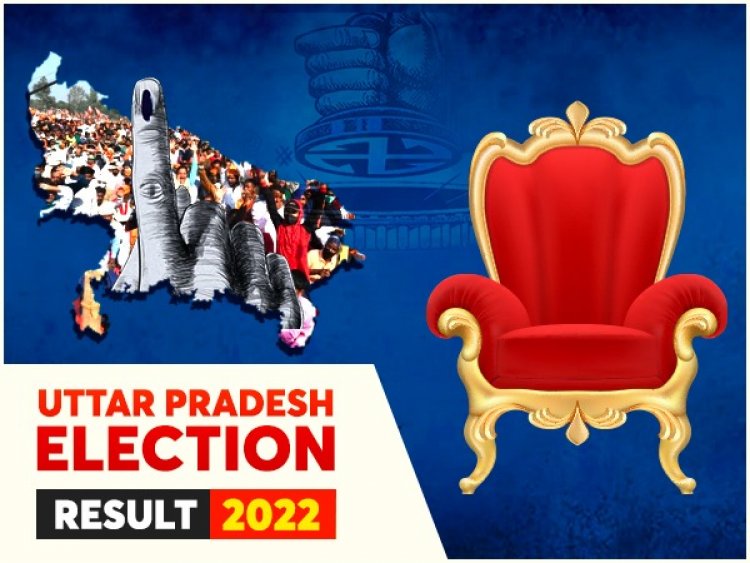
The results of the five state Assembly elections have led people to say that the elections remained unaffected by the farmers’ movement, which went on for more than 13 months on the borders of Delhi. If we take a look at the Uttar Pradesh (UP) results, this seems to be true at first sight because the BJP has returned to power in the state with a majority.
But a closer look at the results in general, and those in the movement districts in particular, reveals that one cannot categorically say that the farmers’ movement had no impact indeed. True, it could not strengthen the opposition as much as was required to bring about a change of regime. The movement was being run by the farmers of Punjab, Haryana, the Terai region and plains of Uttarakhand, and Western UP. Considering the election results in these areas may be a better way of assessing the impact of the movement. Doing so proves that while the movement had a wide-reaching impact in Punjab, it affected the results in four western districts in UP.
The movement against the three new farm laws promulgated by the government was the most vocal in Punjab, and even on the Delhi borders, the participation of the farmers from Punjab was greater. Shiromani Akali Dal (SAD), which staked its claim to power in the state, was part of the government at the Centre. However, when the protests started increasing, the lone minister from the party resigned from the Union Cabinet in order to save the party’s mass base from eroding. Although the party came in favour of the movement, it could not curb its loss. Today, the party is at its ebb in decades of its history.
As far as the BJP is concerned, it contested the elections in alliance with former Chief Minister Capt. Amarinder Singh and some other parties. The Prime Minister and his Cabinet colleagues campaigned there, but the party could not get more than two seats. That the party that has won a majority in four of the five state Assemblies could get only two seats in Punjab proves that it could not mitigate the farmers’ resentment even after the repeal of the three farm laws. The Congress and its government in the state did support the farmers’ movement. However, it collapsed under the weight of its own flaws and could not carry the farmers along with itself. Besides, its Dalit chief minister card only alienated the farmers and was of no avail.
Speaking of UP, we had seen that the farmers’ movement had the maximum impact in and the maximum support on the Delhi borders from the districts of Saharanpur, Shamli, Muzaffarnagar, Meerut, Bijnore and Baghpat. Now, all the three seats in the Shamli district have gone to the Samajwadi Party (SP)-Rashtriya Lok Dal (RLD) alliance. Of the three seats in Baghpat, RLD won one, lost another by a margin of about 200 votes and the third by 7,000 votes. Of the six seats in Muzaffarnagar, the SP-RLD alliance won four while the BJP won only two in comparison to the clean sweep of all the six seats it had made in 2017. In Meerut, the alliance won five of the seven seats. In Bijnore, too, the performance of the alliance was better than that of the BJP.
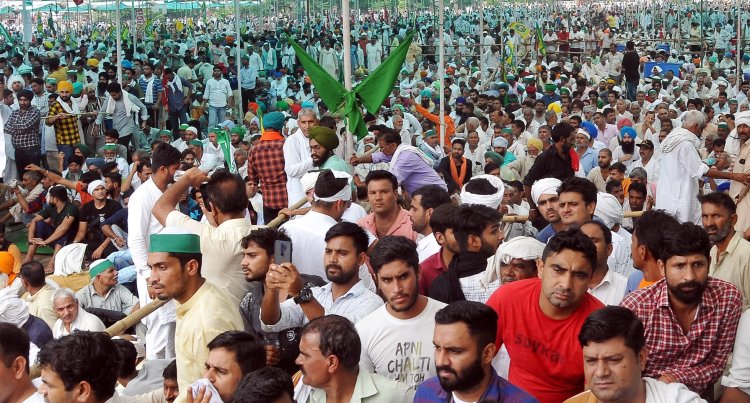
The farmers’ movement does not seem to have made much of an impact on the state level. Yet, if the BJP suffered losses and the SP-RLD alliance made huge gains in the districts of Muzaffarnagar and Shamli, the major reason for this is that the votes did not split on communal lines. These two districts had been the epicentre of the communal riots in 2013. But the alliance’s victory in these two districts suggests that it has got the Muslim and Jat votes.
The BJP did try to lend communal colour to its election campaign in this region. Starting the campaign in Kairana, the Union Home Minister had raised the issue of an exodus from there on communal lines. Similar issues were raised in Muzaffarnagar, too. However, in September, it was emphasised in the farmers’ mahapanchayat organized by the Bharatiya Kisan Union (BKU) that communal division be stopped. The farmers’ movement contributed to establishing communal harmony here and this is what the SP-RLD alliance gained from. It was due to this that state cabinet minister Suresh Rana lost from Thana Bhawan, Sangeet Som lost from Sardhana and sitting MLA Umesh Malik from Budhana and that too by a sizeable margin. All the three former MLAs have been accused in the Muzaffarnagar riots. The biggest reason why they have lost is that the Muslim and Jat voters together have voted against the BJP and for the SP-RLD alliance.
Therefore, at a time when the BJP is coming to power with as many as 255 seats, the loss of these leaders of stature goes on to prove that the farmers’ movement did have an impact on the elections here. One should note that the BKU has its headquarters at Sisauli in the district of Muzaffarnagar and the organization had given a call to vote against the BJP. However, its leaders refrained from contesting the elections themselves, which should be considered to be a wise move. The fate of the candidates from the Sanyukt Samaj Morcha (SSM), the political front of 22 farmers’ unions that had taken part in the movement in Punjab, is a big lesson for the farmers’ organizations that they should keep their distance from politics.



 Join the RuralVoice whatsapp group
Join the RuralVoice whatsapp group




















